Moleskin fabric, despite its name, is not made from animal skin but is a heavy cotton fabric known for its soft and suede-like surface.
With a long history dating back to medieval times, this versatile fabric has gained popularity for its remarkable qualities.
Moleskin fabric is renowned for its durability, windproof nature, and comfortable feel, making it a sought-after choice for various applications.
Whether used in clothing, upholstery, or accessories, moleskin fabric offers a luxurious texture and a blend of functionality and style.
However, it is important to consider the specific care requirements and environmental impacts associated with moleskin fabric.
We will explore the characteristics, uses, care tips, and environmental considerations of moleskin fabric, shedding light on its unique qualities and highlighting both its advantages and potential limitations.
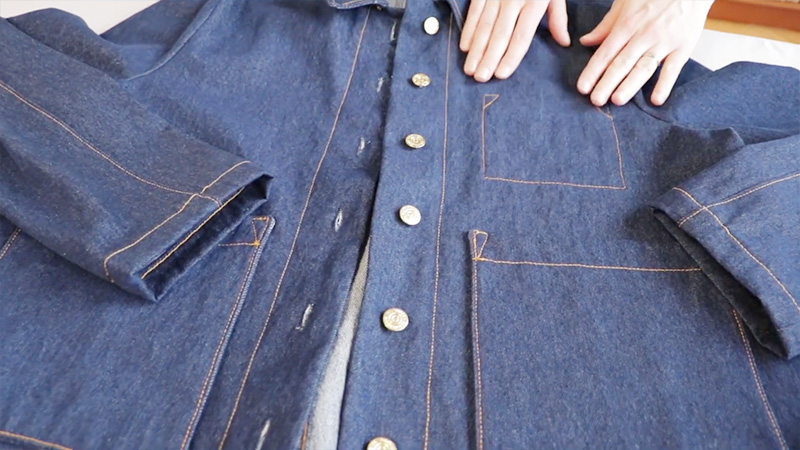
What is Moleskin Fabric?
Moleskin fabric is a heavy cotton fabric known for its soft, short pile on one side, resembling suede or felt. Despite its name, it is not made from animal skin.
This versatile fabric is widely used in various applications. Its softness, durability, and windproof properties make it ideal for crafting clothing that provides both comfort and protection.
Moleskin fabric is also utilized for medical purposes, serving as a preventive measure against blisters due to its smooth texture. In addition, it finds application in audiovisual productions, as it effectively conceals microphones.
With roots dating back to medieval times, moleskin fabric gained popularity among workers and sports enthusiasts during the 19th century.
History of Moleskin Fabric
Moleskin fabric has a fascinating history that dates back to medieval times but gained significant popularity in the 19th century.
Originally used by steelworkers for protection against molten metal, it soon became favored by farmers and laborers due to its durability and resistance to the elements.
Its long-lasting nature made it ideal for workwear, while its soft texture and insulation qualities led to its incorporation into various garments for outdoor enthusiasts and sportsmen.
Despite its name, moleskin fabric is made from heavy cotton with a soft pile, resembling suede or felt. Today, it continues to be a valued material in the textile industry, finding applications in clothing production and even medical uses.
Characteristics of Moleskin Fabric
Material
Moleskin fabric is typically made from heavy cotton. The use of cotton ensures that the fabric is soft, breathable, and comfortable to wear.
Weaving
The cotton threads are woven together to create a strong and sturdy fabric structure. This weaving process gives moleskin its inherent durability.
Shearing
After the weaving process, the fabric is sheared, which means the top surface is trimmed to create a short, soft pile. This step gives moleskin its characteristic nap, similar to felt or chamois.
Softness
The shearing process results in a fabric with a remarkably soft and smooth texture. Moleskin fabric feels luxurious to the touch, providing a pleasant tactile experience for the wearer.
Durability
Due to its heavy cotton construction and tightly woven fibers, moleskin fabric is highly durable. It can withstand regular wear and tear, making it suitable for clothing that requires resilience and longevity.
Windproof
One of the notable qualities of moleskin fabric is its windproof nature. The dense weaving and short pile help to create a barrier against chilly winds, providing insulation and protection from the elements.
Water-resistant
While moleskin fabric is not completely waterproof, its dense structure and natural cotton properties make it somewhat resistant to water. It can repel light rain or moisture to some extent, keeping the wearer relatively dry.
Versatility
Moleskin fabric’s characteristics make it versatile for various applications. It can be used to create a wide range of clothing items, including jackets, pants, shirts, and even accessories like hats or bags.
Warmth
The dense weave and soft pile of moleskin fabric contribute to its ability to provide warmth. It has excellent insulating properties, making it suitable for garments designed to keep the wearer cozy in colder weather.
Appearance
Moleskin fabric has a refined and classic look. Its nap gives it a slightly textured appearance, resembling suede or velvet but with a less plush feel than velour.
It offers a sophisticated aesthetic that can be both casual and elegant, depending on the style of the garment.
Moleskin fabric is characterized by its heavy cotton composition, soft nap, durability, windproof and water-resistant properties, versatility, warmth, and refined appearance. These qualities make it a popular choice for clothing items that prioritize comfort, durability, and style.
Types of Moleskin Fabric
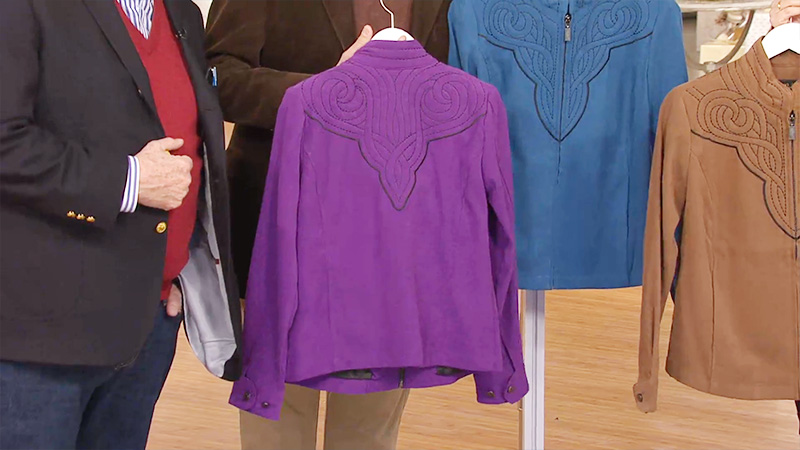
Swansdown
Swansdown moleskin is a fine and smooth variant of the fabric. It has a luxurious feel and a subtle sheen on the surface, giving it an elegant appearance. Swansdown moleskin is known for its exceptional softness and comfort.
Imperial
Imperial moleskin is a medium-weight variation that features a velvety texture. It strikes a balance between being soft and durable, making it suitable for a range of garments. Imperial moleskin has a refined look and offers a touch of sophistication.
O’neil
O’Neil moleskin is a heavy and thick type of the fabric. It is characterized by a coarse nap, which gives it a rugged appearance and enhanced durability. O’Neil moleskin is particularly well-suited for outdoor workwear or garments that require extra strength.
Patent
Patent moleskin is a unique variant that stands out due to its stiff and shiny surface. It closely resembles leather and can be used as a vegan alternative.
Patent moleskin is often employed for crafting accessories or statement pieces that demand a distinctive look.
These variations in moleskin fabric offer different textures, weights, and finishes, allowing for versatility in their applications. Each type of moleskin has its own set of characteristics that cater to specific preferences and purposes, ensuring there is an option available to suit various clothing needs.
What is Moleskin Fabric Made of?
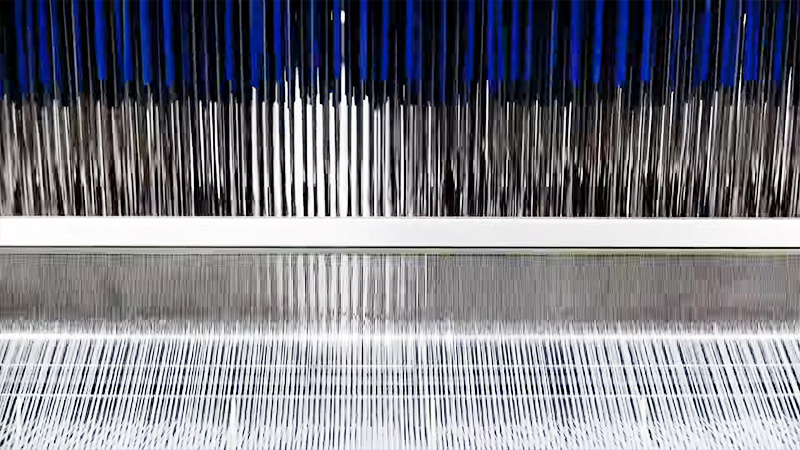
Moleskin fabric is made using the following step-by-step process:
Cotton Fiber Selection
The first step in manufacturing moleskin fabric involves selecting high-quality cotton fibers. Cotton is a natural fiber known for its softness, breathability, and durability.
Carding
The selected cotton fibers are carded to align them in the same direction. Carding helps remove any impurities, tangles, or short fibers, resulting in a more uniform and smooth cotton web.
Spinning
The carded cotton fibers are then spun into yarn. This process involves twisting the fibers together to create a continuous strand of thread. Spinning strengthens the yarn and prepares it for the subsequent weaving process.
Weaving
The spun cotton yarn is woven on a loom to create the base fabric. The weaving process interlaces the yarns vertically (warp) and horizontally (weft) to form a dense and tightly woven fabric structure.
Finishing
After the weaving is complete, the moleskin fabric undergoes a finishing process. This typically involves several steps to achieve the characteristic brushed surface.
The fabric is subjected to mechanical brushing, where it is passed over abrasive rollers or brushes. This brushing process raises the fibers on the surface, creating a soft, plush pile that resembles suede or mole fur.
Shearing
In some cases, the brushed fabric may undergo additional shearing. This step involves trimming the raised fibers to a consistent length, resulting in a more uniform and refined appearance.
Inspection and Quality Control
The finished moleskin fabric is thoroughly inspected to ensure it meets the desired quality standards. It is checked for any flaws, inconsistencies, or defects that may affect its performance or appearance.
Moleskin fabric is primarily made from densely woven cotton fibers, and its characteristic brushed surface is achieved through mechanical brushing.
The step-by-step process ensures the fabric’s softness, durability, and distinctive suede-like or mole fur-like texture. It is important to note that despite its name, moleskin fabric is not made from animal skin.
What is Moleskin Fabric Used for?
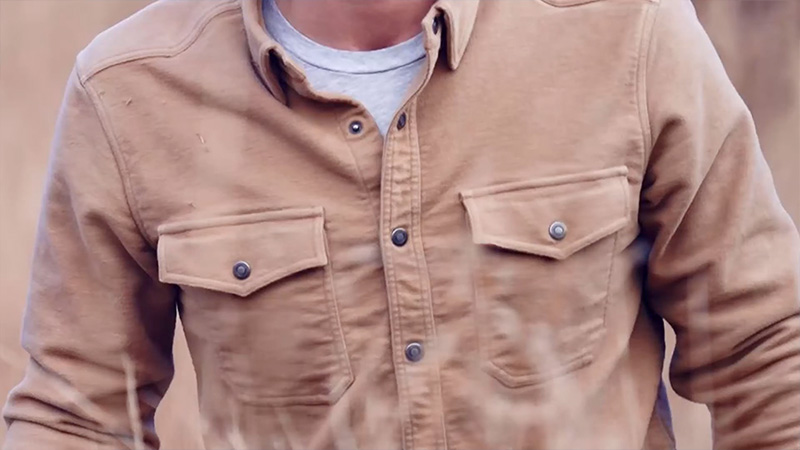
Moleskin fabric is used for various purposes and can be employed in the following step-by-step applications:
Trousers
Moleskin fabric is commonly used to make trousers, often referred to as “moleskins.” These trousers are typically cut and constructed similarly to jeans, with a fitted design and durable construction.
Moleskin trousers are favored for their softness, durability, and comfort, making them suitable for both casual and more formal occasions.
Workwear
Moleskin fabric’s durability and windproof properties make it ideal for workwear garments. It is commonly used in industries where workers require protection and resilience, such as construction, agriculture, and manual labor.
Moleskin clothing can withstand rugged conditions and provide insulation against the elements.
Outdoor Clothing
Moleskin fabric’s ability to provide warmth and wind resistance makes it suitable for outdoor clothing. It is often utilized in jackets, coats, and vests designed for outdoor activities like hiking, camping, or hunting.
Moleskin garments help keep the wearer comfortable and protected in varying weather conditions.
Accessories
Moleskin fabric is also used in the production of various accessories. It can be found in hats, bags, gloves, and even footwear. The fabric’s softness and durability make it an excellent choice for accessories that require both style and functionality.
Medical Purposes
Moleskin fabric is sometimes used for medical purposes, particularly in the prevention of blisters. Its smooth texture and ability to reduce friction make it a useful material for creating patches or strips that can be applied to areas prone to blistering, such as the feet or hands.
Audiovisual Productions
Moleskin fabric is utilized in the field of audiovisual productions, particularly for concealing microphones. Its soft and suede-like texture helps to minimize rustling noises and provides a discreet way to hide microphones on actors or props in film, theater, or television productions.
Upholstery and Home Décor
Due to its plush texture and durability, moleskin fabric can also be used for upholstery purposes. It can be employed to cover furniture, cushions, or pillows, adding a touch of warmth and comfort to the home.
Moleskin fabric’s versatility and desirable characteristics, such as softness, durability, wind resistance, and breathability, make it suitable for a wide range of applications.
Whether it’s for clothing, workwear, outdoor gear, accessories, medical use, audiovisual productions, or home décor, moleskin fabric offers a combination of functionality and aesthetic appeal.
Is Moleskin a Good Fabric?
Moleskin is indeed considered a good fabric for several reasons. Its tightly woven structure lends it wind-resistant properties, with some variations of the fabric even being nearly wind-proof.
This makes it an excellent choice for garments that require protection against harsh weather conditions, ensuring comfort and insulation for the wearer.
Moreover, moleskin fabric is highly durable. It’s tight weave and robust construction contribute to its ability to withstand heavy use and resist abrasion.
The fact that the West German Army used moleskin for its fatigues over several decades speaks to its long-lasting nature and reliability.
Additionally, moleskin fabric offers a soft and luxurious feel. Its brushed surface resembles suede or fur, providing a pleasant tactile experience. This combination of durability and softness makes moleskin fabric comfortable to wear for extended periods.
Furthermore, moleskin fabric is versatile in its applications. It can be used for a wide range of garments, from trousers and jackets to accessories and upholstery. Its ability to blend functionality with aesthetic appeal adds to its appeal as a good fabric choice.
Overall, moleskin fabric’s wind-resistant properties, durability, comfort, and versatility make it a favorable option, particularly for those seeking reliable and long-lasting clothing or items that offer both practicality and style.
Is Moleskin 100% Cotton?
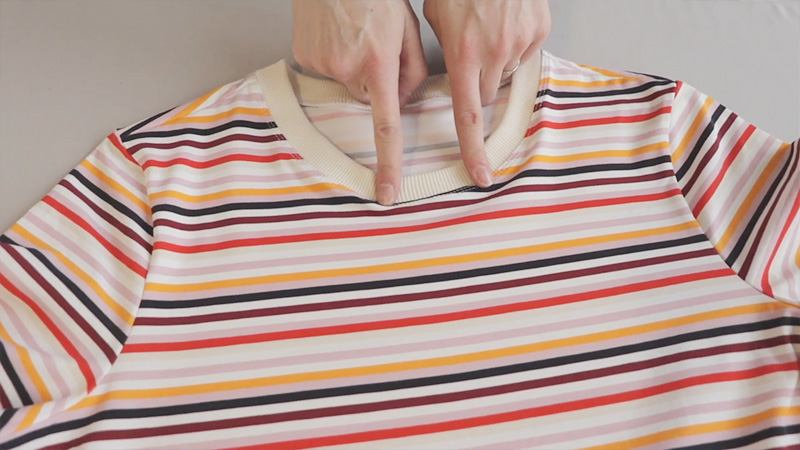
Moleskin fabric can indeed be made from 100% cotton. The description you provided states that the navy moleskin fabric is 100% cotton. This means that the fabric is composed entirely of cotton fibers without any other synthetic or blended materials.
Opting for 100% cotton moleskin fabric offers several advantages. Cotton is a natural fiber known for its softness, breathability, and comfort. It provides a comfortable and gentle feel against the skin, making it a popular choice for clothing items.
Additionally, 100% cotton moleskin fabric retains the inherent qualities of cotton, including its ability to absorb moisture and allow air circulation.
This helps in regulating body temperature and reducing sweat build-up, ensuring comfort even during extended wear.
Moreover, cotton fibers are known for their durability, making the fabric sturdy and long-lasting. It can withstand regular use, providing excellent resistance to wear and tear.
Moleskin fabric made from 100% cotton offers a combination of warmth, durability, and comfort, making it a desirable choice for various clothing and textile applications.
Is Moleskin Cotton Waterproof?
Moleskin fabric made from cotton is not inherently waterproof. Cotton fibers have the tendency to absorb water rather than repel it. Therefore, untreated moleskin trousers made from cotton would not be waterproof.
If waterproofing is desired for moleskin trousers or any other cotton fabric, a special waterproofing treatment is required. This treatment typically involves applying a waterproofing agent or coating to the fabric.
The waterproofing agent creates a barrier on the fabric’s surface, preventing water from penetrating the fibers and causing them to absorb moisture.
It is important to note that the effectiveness and durability of the waterproofing treatment may vary depending on the specific product used and how well it is applied.
Over time and with wear, the waterproofing treatment may need to be reapplied to maintain its effectiveness.
So, while moleskin fabric made from cotton is not naturally waterproof, it can be treated with a waterproofing agent to enhance its water-resistant properties.
Is Moleskine Expensive?
Moleskine notebooks can be considered relatively expensive compared to other brands of notebooks on the market. The pricing of Moleskine products often reflects their reputation for quality, design, and durability.
Moleskine notebooks are known for their attention to detail, durable binding, high-quality paper, and iconic design features such as elastic closure and expandable inner pocket.
While the cost of Moleskine notebooks can vary depending on the specific model, size, and retailer, they generally fall into a higher price range compared to more basic or generic notebook options.
This higher price point may be seen as a reflection of the brand’s premium positioning and the perceived value associated with its reputation.
Ultimately, the price of Moleskine products is a subjective matter, with some individuals willing to invest in their quality and aesthetic appeal, while others may prefer more affordable alternatives.
Is Moleskin Good for Hot Weather?
Moleskin trousers, despite being known for their warmth and wind resistance, can also be suitable for hot weather due to their high breathability. While moleskin fabric has a dense weave, it still allows air circulation, making it comfortable in warmer climates.
The breathability of moleskin fabric helps to regulate body temperature by allowing heat and moisture to escape, keeping the wearer cool and preventing excessive sweating. This makes moleskin trousers a versatile option that can be worn in different seasons.
Additionally, moleskin fabric is typically made from natural fibers like cotton, which have inherent moisture-wicking properties. This helps to absorb and evaporate sweat, contributing to a more comfortable and dry experience even in hot and humid conditions.
It’s worth noting that lighter-weight variations of moleskin fabric may provide even better breathability and comfort in hot weather.
Considering these factors, moleskin trousers can indeed be a good choice for individuals looking for both durability and breathability in their clothing options, even during hotter seasons.
How Do You Wash Moleskin Fabric?
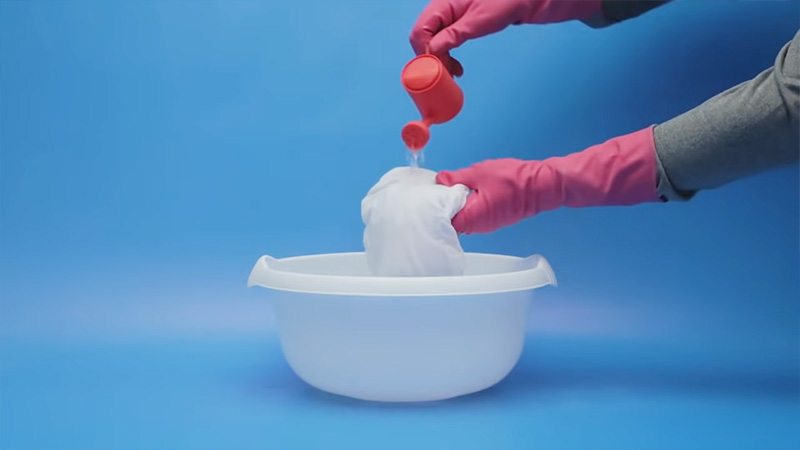
When it comes to washing moleskin fabric, it’s important to follow specific care instructions to maintain its quality and prolong its lifespan. Here is a general guide on how to wash moleskin fabric:.
Check the Label
Before washing, always check the care label attached to the moleskin garment for any specific instructions or recommendations from the manufacturer. This can provide valuable information regarding the fabric’s specific requirements.
Turn Inside Out
Turn the moleskin garment inside out. This helps to protect the outer surface and minimize any potential damage during the washing process.
Use Cold Water
Wash moleskin fabric in cold water. Set the washing machine to a gentle cycle, ensuring a maximum temperature of 30 degrees Celsius (86 degrees Fahrenheit). The cold water helps to prevent color fading and minimize the risk of shrinking.
Choose Non-biological Detergent
Select a mild, non-biological detergent that is suitable for delicate fabrics. Avoid using bleach or fabric softeners, as these can damage the fabric’s fibers and affect its softness.
Gentle Agitation
Allow the washing machine to agitate the moleskin garment gently. Avoid using excessive force or high-speed cycles, as this can cause unnecessary stress on the fabric.
Hang to Dry
After washing, hang the moleskin garment to dry. It is best to hang it in a well-ventilated area away from direct sunlight. Hanging the garment vertically helps to prevent fabric shrinkage as the weight of the garment helps it retain its shape.
Avoid Tumble Drying
Do not tumble dry moleskin fabric, as the high heat and agitation can damage the fabric and cause shrinkage. It’s best to air dry the garment naturally.
How to Care for Moleskin Clothes?
Moleskin clothes are known for their softness and durability, but they require specific care to maintain their quality and extend their lifespan. Here are some tips on how to care for moleskin clothes:
Washing
Moleskin clothes should be washed by hand or on a gentle cycle in the washing machine using cold water. Use a mild detergent specifically designed for delicate fabrics. Avoid using bleach, fabric softener, or dryer sheets, as they can damage the moleskin fabric.
Drying
After washing, hang the moleskin clothes to dry or lay them flat on a clean towel. Avoid wringing or twisting the fabric, as this can cause stretching or distortion. Moleskin clothes should not be tumble dried, as the high heat and agitation can lead to shrinkage.
Ironing
If needed, iron moleskin clothes on low heat. Place a cloth between the iron and the fabric to prevent direct heat contact. Avoid using steam or spray starch, as it can leave unwanted marks or affect the fabric’s texture.
Storage
Store moleskin clothes in a cool and dry place, away from direct sunlight and moths. Ensure they are clean and completely dry before storing them to prevent mildew or odors. Consider hanging them or folding them gently to avoid creasing.
How Does Moleskin Fabric Impact the Environment?
Moleskin fabric, like many other textile products, has environmental impacts throughout its lifecycle. Here are some ways in which moleskin fabric can impact the environment:
Water and Energy Consumption
The production and dyeing processes of cotton fibers used in moleskin fabric require significant amounts of water and energy. Cotton is a thirsty crop, and large amounts of water are needed for irrigation.
Additionally, energy-intensive processes such as spinning, weaving, and finishing contribute to the fabric’s environmental footprint.
Chemical Use and Pollution
The use of chemicals, including pesticides and synthetic dyes, in cotton cultivation and fabric production can have detrimental effects on the environment.
Pesticides and fertilizers can contaminate water sources and harm ecosystems. The discharge of untreated wastewater from dyeing processes can pollute water bodies, affecting aquatic life and human health.
Waste Generation
Depending on the finishing processes and the quality of the fabric, moleskin fabric may not be easily biodegradable or recyclable. This can contribute to waste generation and the accumulation of textiles in landfills, where they may take a long time to break down.
Land Use and Biodiversity Loss
The cultivation of cotton for moleskin fabric production often requires large amounts of land, which can lead to deforestation, habitat loss, and a decline in biodiversity.
Considering these factors, moleskin fabric is not considered very eco-friendly. However, it’s important to note that efforts are being made within the textile industry to address these environmental concerns.
Sustainable cotton farming practices, water and energy conservation measures, and the use of eco-friendly dyes and finishing processes are being implemented to reduce the environmental impact of fabric production.
Additionally, recycling and upcycling initiatives are emerging to divert textiles from landfills and promote circularity in the industry.
What Are the Advantages and Disadvantages of Moleskin Fabric
Advantages of Moleskin Fabric
- Durability: Moleskin fabric is known for its durability and ability to withstand wear and tear. It is resistant to abrasion and maintains its structural integrity over time.
- Windproof: The dense weave of moleskin fabric provides excellent windproof properties, making it ideal for outdoor activities and protecting against chilly winds.
- Moisture-Resistant: While moleskin fabric is not waterproof, it does offer some resistance to moisture. It can repel light rain or drizzle and dries relatively quickly.
- Soft and Comfortable: Moleskin fabric has a soft and suede-like surface that provides a luxurious feel against the skin. It offers exceptional comfort and is gentle to wear for extended periods.
- Versatility: Moleskin fabric is versatile and can be used for a range of clothing styles. It is suitable for both casual wear and more formal business attire, offering a blend of functionality and aesthetic appeal.
Disadvantages of Moleskin Fabric
- Prone to Pilling: Moleskin fabric has a tendency to develop small fabric balls or “pills” on the surface with extended wear. Regular care and maintenance, such as gentle brushing, can help minimize pilling.
- Fading: Moleskin fabric may experience some fading over time, especially when exposed to prolonged sunlight or harsh washing detergents. This can impact the appearance of the fabric.
- Shrinking: Moleskin fabric, like cotton, has the potential to shrink if exposed to high heat or aggressive washing methods. Proper care, such as using cold water and gentle drying, is necessary to prevent shrinkage.
- Care Requirements: Moleskin fabric requires special care to maintain its quality. It should be gently washed and line-dried, avoiding harsh detergents, bleach, or tumble drying. Careful attention to the care instructions is necessary to prevent damage or loss of fabric properties.
While moleskin fabric offers several advantages, it is essential to consider its disadvantages and properly care for the fabric to ensure its longevity and performance.
By understanding and addressing these factors, individuals can make informed decisions regarding the use and maintenance of moleskin fabric garments.
Comparison Table Between Moleskin Fabric and Other Fabrics
| Fabric | Composition | Softness | Durability | Windproof | Moisture-Resistant |
|---|---|---|---|---|---|
| Moleskin | Heavy cotton fabric | Very soft | Very durable | Yes | Yes |
| Corduroy | Cotton or blend of fibers | Soft to medium | Durable | Some variations | Not moisture-resistant |
| Velvet | Various fibers | Very soft | Moderate | Some variations | Not moisture-resistant |
| Suede | Animal skin (leather) | Very soft | Durable | Some variations | Not moisture-resistant |
| Faux Suede | Synthetic fibers | Soft | Moderate | Some variations | Not moisture-resistant |
| Felt | Wool or synthetic fibers | Soft | Moderate | Not windproof | Not moisture-resistant |
FAQs
Moleskin fabric is versatile and can be suitable for various seasons. It provides warmth and windproof properties, making it suitable for colder weather.
However, it is also breathable, which allows for comfort in warmer temperatures. Lighter weight variations of Moleskin fabric can be particularly suitable for summer or transitional seasons.
Yes, Moleskin fabric can be used for upholstery purposes. Its durable and soft characteristics make it a viable option for upholstering furniture, cushions, or other textile products.
However, it is important to consider the specific requirements of your upholstery project and choose the appropriate weight and type of Moleskin fabric accordingly.
Yes, Moleskin fabric can be dyed or printed with patterns. The fabric’s dense and tightly woven structure provides a good base for various dyeing and printing techniques.
It is important to follow the appropriate dyeing or printing methods suitable for cotton fabrics to achieve desired results.
Moleskin fabric and denim both offer durability, but they have different characteristics. Denim is known for its strength and ruggedness, making it highly resistant to wear and tear.
Moleskin fabric, on the other hand, provides durability through its tightly woven construction. While both fabrics are durable, the choice between them depends on personal preference and the specific requirements of the garment or project.
Yes, Moleskin fabric can be ironed. It is recommended to use low heat and place a cloth between the iron and the fabric to prevent direct heat contact.
Avoid using steam, as it can affect the fabric’s texture. Following proper ironing techniques helps maintain the fabric’s softness and appearance.
To Recap
Moleskin fabric offers a unique combination of softness, durability, and versatility. It is a heavy cotton fabric with a soft and suede-like surface, providing a luxurious feel.
Moleskin fabric is known for its windproof and moisture-resistant properties, making it suitable for various applications, including clothing, upholstery, and accessories.
While Moleskin fabric has several advantages, such as its ability to provide warmth, breathability, and comfort, it also has some drawbacks, including the potential for pilling, fading, and shrinking. Proper care is necessary to maintain its quality and longevity.
Despite its environmental impacts and the need for special care, Moleskin fabric remains a popular choice for those seeking a fabric that combines style, functionality, and durability.
Whether for outdoor activities, casual wear, or business attire, Moleskin fabric continues to be appreciated for its unique qualities, offering a balance between comfort and resilience.
Leave a Reply